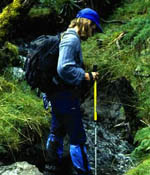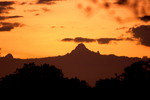| | |
| |
| |
| | | Search by holiday | | |
| To search the database for the holiday (type of tour or trip) of your choice, use the boxes below. | |
| |
| Select Destination | | |
| |
| | |
|
| |
| Holiday category | | |
|
| |
|
| |
| Holiday activity | | |
|
| |
|
| Accommodation Category | | |
|
| |
|
 | | |
| advanced search | |
| | | | | | | |
| | |
| |
| |
| |
|  | |
| | | |
| |  | |
Trekker in Rwenzori | |
| |
|
| |  | |
Mt. Kilimanjaro | |
| |
|
| |  | |
Mt. Kenya | |
| |
|
| |  | |
Mt. Kenya National Park | |
| |
|
| |  | |
Sunset on Mt. Kenya | |
| |
| | |
| |
|
East Africa is home to two of the continents most famous mountains, Mount Kilimanjaro, the highest mountain in Africa, and Mount Kenya, the second highest mountain. Other ranges include the Aberdares (Kenya), Mount Elgon (Kenya), the Cherangani Hills (Kenya), the Rwenzori Mountains of the Rwenzori National Park (Uganda), the Usambara Mountains (Tanzania) and Mount Meru (Tanzania).
Mount Kenya
One of the world’s highest National Parks, Mount Kenya is an extinct volcano some three and a half million years old. Straddling the equator, the mountain offers a unique mosaic of forest, moorland, rock and ice and is crowned by the glittering twin peaks of Batian (5,199 m) and Nelion (5,188 m). The sacred home of Ngai, God of the Kikuyu people, Mount Kenya is Kenya’s highest mountain, a national icon, a climbers’ Mecca, the nation’s namesake, a UNESCO Natural World Heritage site and a wildlife stronghold.
There are three principal routes up the mountain, the NaroMoru Route, the Sirimon Route and the Chogoria Route. The most popular route is the NaroMoru Route (Overall altitude gain: 2,985 m. Distance: 38 km. Time: 3 days minimum. Start point: NaroMoru Gate. Finish point: Met Station. Highest point: Point Lenana).
Mount Kilimanjaro
Close to the northern city of Arusha is the majestic snow-capped and pink-haloed Mount Kilimanjaro (5,895 m), the ‘Shining Mountain’. Not only the highest mountain in Africa this extraordinary mountain is also the highest freestanding peak in the world and is topped by one fifth of all the ice in Africa. To climb the mountain lies within the range of anyone who is reasonably fit and the ascent is made by trekking rather than by climbing.
There are at least ten trekking routes (minimum 4 nights), all of which traverse lush rainforests, open moorland and alpine desert to reach the Kibo dome at (4,000 m); three other routes continue to the summit.
There are many forms of mountain climbing:
- A specific 3-6 day climb up Mount Kenya or Mount Kilimanjaro, which is typically done in a group, with professional guides and porters and with overnight stays in the, of necessity basic, climbing huts.
- Moorland walks or gentle treks on the lower slopes of the above mountains.
- Moorland treks or hikes on any of the other mountain ranges, with various options as to accommodation ranging from luxury lodges to simple camping.
- Walking/trekking safaris in the mountain ranges – tailored to specific groups.
Health and safety when climbing Mount Kenya or Mount Kilimanjaro
- Acute Mountain Sickness (AMS): above 3,500 m you may notice the effects of altitude, especially if your body is tuned only to sea level. AMS usually develops in the first 8-24 hours at high altitude, and is rare below 4,500 m.Physical symptoms are unpredictable and vary greatly between individuals but they can include: breathlessness, nausea, disorientation, slurred speech and headaches, especially at night.
- To avoid the effects of altitude: it is essential to make a slow ascent, thus allowing sufficient time for your body to acclimatize to the altitude. It is also recommended that visitors allow at least five days after arriving in East Africa, before climbing either Mount Kenya or Mount Kilimanjaro.
- Fluid intake: to avoid altitude sickness, keep your fluid intake as high as possible (3-5 litres a day is recommended) and avoid alcohol.
| |
| |
| | |
| | | |
| | | | | | |
| | |
| |
| | Filter by | | | Destination | | | Price | | | Sort by | | |
| | | | | | | | | | | |
| | |
| | |
| | |
| | |